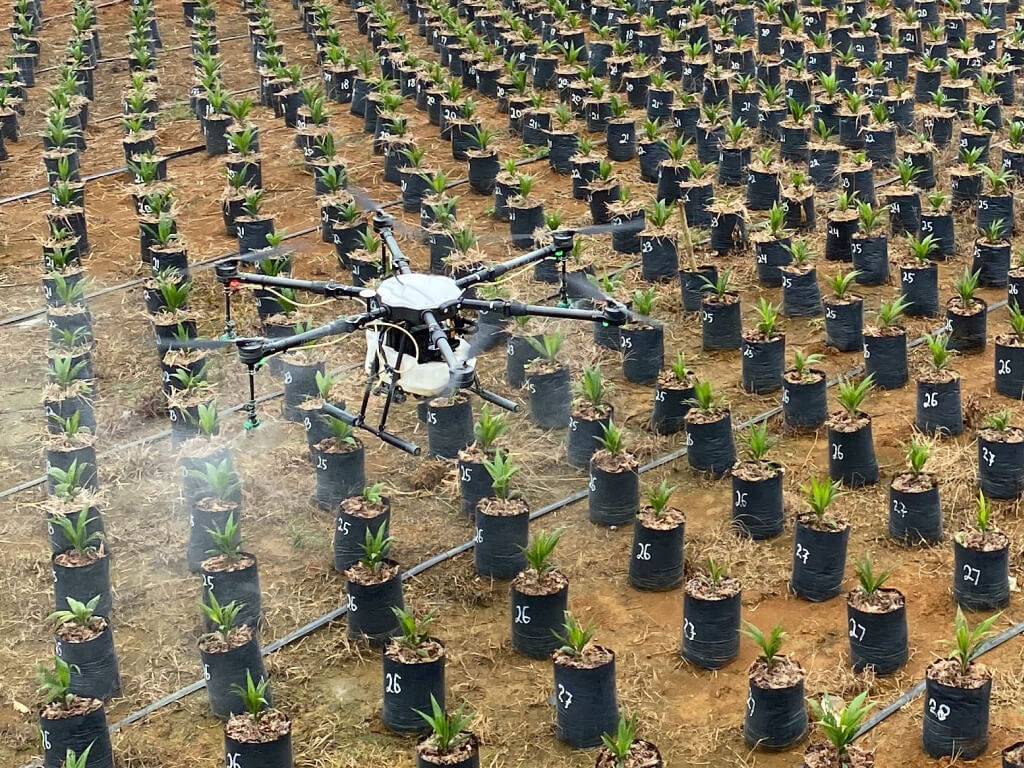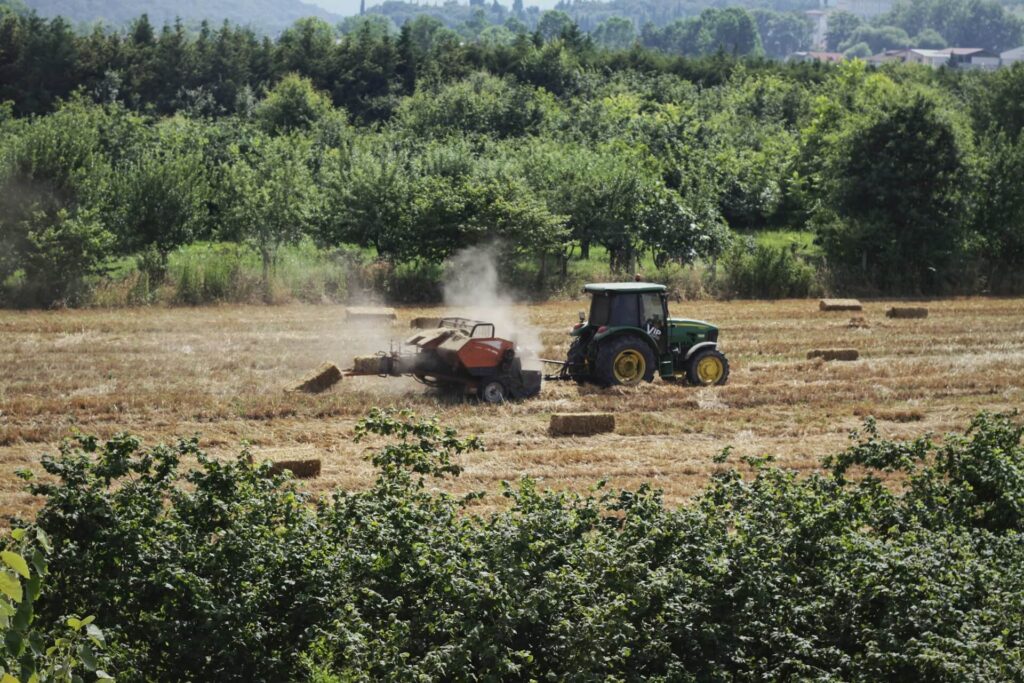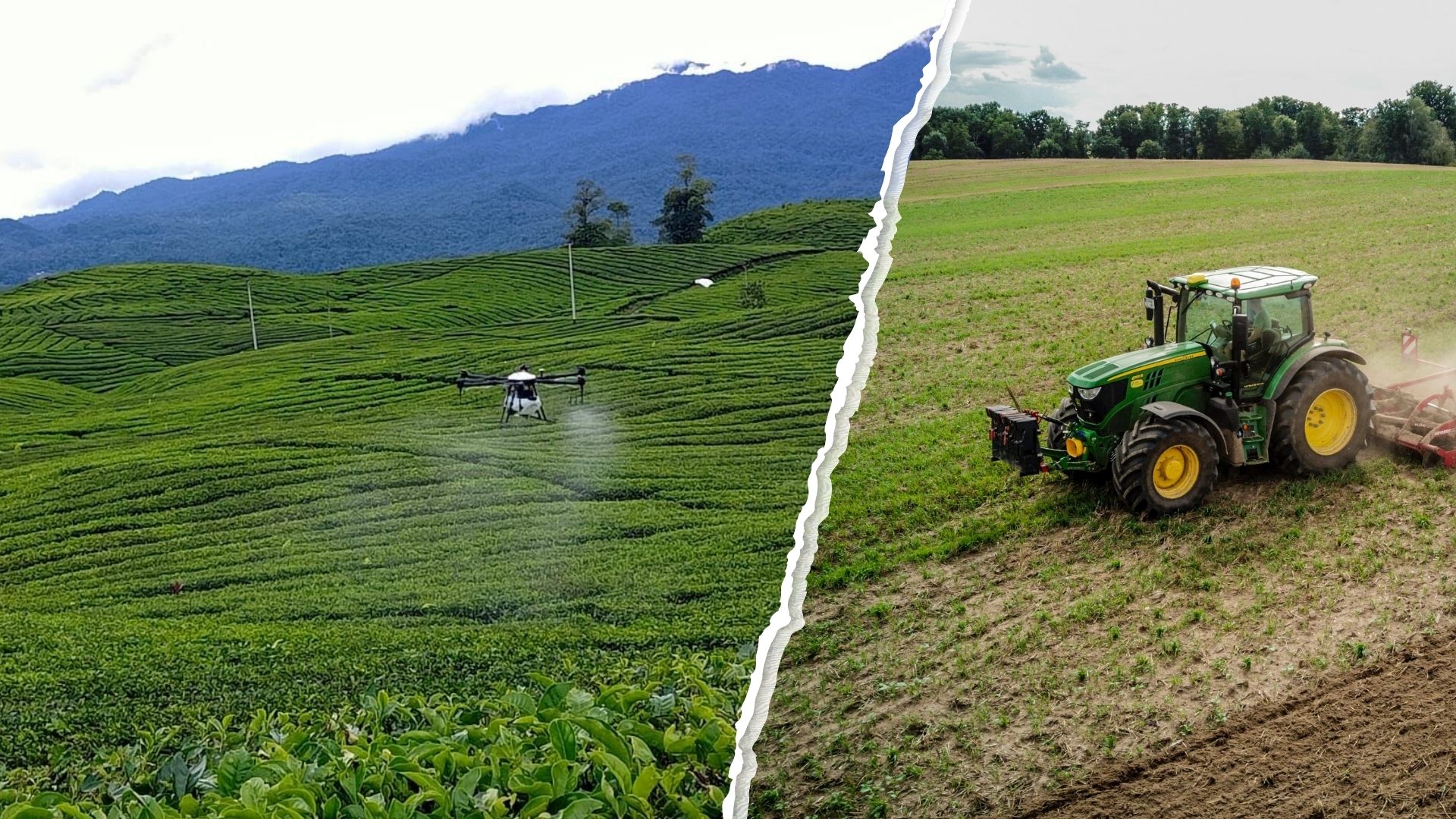The world of agriculture is constantly evolving, and a question that often arises is, “Will drones replace tractors in modern farming?” These two aspects of contemporary agriculture contrast tradition and innovation, each with benefits and limitations. As technology advances and sustainability becomes increasingly important, the debate intensifies. Drones may replace tractors for spraying, but tractors serve other essential functions. So, this article explores the difference between tractors and drones in agriculture, examining the possibilities, challenges, and implications of their coexistence or potential displacement.
The Difference Key Points Between Tractors and Drones in Agriculture
| Aspect | Drones | Tractors |
|---|---|---|
| Quick Deployment | Can be quickly deployed for monitoring tasks | Require more time for deployment |
| Accessibility | Can access hard-to-reach or remote areas | Limited by terrain and accessibility |
| Automation | Can be automated for autonomous operations | Require manual operation for most tasks |
| Speed and Efficiency | Can cover large areas quickly and efficiently | Efficient but may be slower compared to drones |
| Equipment Transport | Unable to transport heavy equipment or crops | Capable of towing heavy loads and transporting equipment |
Functionality
Drones
Drones or UAVs have revolutionized farming practices with their ability to perform various tasks. One of their primary functions is crop monitoring, which uses high-resolution cameras to capture detailed images of fields. This imagery lets you detect early signs of crop stress, diseases, or pest infestations, enabling them to take timely action to mitigate these issues.
Moreover, drones in agriculture are instrumental in creating precise maps of farmland. By collecting data on soil composition, moisture levels, and topography, drones help you create detailed maps that inform decision-making processes.
Tractors
Tractors are the workhorses of modern agriculture, essential for various ground-based tasks. Their primary function includes plowing, planting, and harvesting, where their power and versatility are unmatched. Tractors are also used for soil preparation, such as tilling and leveling, which are crucial for creating an optimal planting environment.
In addition to fieldwork, tractors are vital in transporting crops and equipment around the farm. Their ability to tow heavy loads makes them indispensable for logistics within a farm operation. Tractors are also used for mowing, hay baling, and post-harvest processing, further highlighting their versatility in agricultural operations.
Scale and Efficiency
Drones
Drones are particularly well-suited for large-scale farming operations. Their ability to quickly cover targeted zones makes them invaluable for monitoring vast expanses of farmland. Drones can survey fields in a fraction of the time it would take a person to do so manually, saving time and reducing the need for extensive manual labor.
Moreover, drones are highly efficient in their operations. They can be programmed to follow specific flight paths, ensuring that every inch of a field is covered. This precision allows you to gather accurate data and make informed decisions based on real-time information.

Tractors
Tractors are ideal for smaller to medium-scale farming operations or specific field areas. While drones may cover less ground than drones, tractors are highly efficient at performing tasks like tilling, planting, and harvesting. Their ability to handle heavy machinery and equipment makes them indispensable for these operations. You can also find modern tractors and UGVs (Unmanned Ground Vehicles) that can be set to mow automatically. The concept is similar to drones, but they operate on the ground while drones operate in the air.
Cost and Investment
Drones
Despite their significant upfront cost, drones can be an excellent investment for large-scale farming operations. Furthermore, they are designed to last long, and their durability makes them worth the initial expense. The cost of a drone can vary depending on its features and capabilities, but the increased efficiency and productivity they provide can justify the investment.
Tractors
On the other hand, tractors are relatively affordable, especially the entry-level models, which makes them accessible to small and medium agribusinesses. However, advanced tractors with specialized features can be expensive, especially for smaller operations. Therefore, evaluating your needs and budget carefully before investing in a tractor to ensure you choose the suitable model for your farm is essential.
Human Intervention
Drones
Drones require skilled operators for flight control, data analysis, and maintenance. However, with technological advancements, drones are becoming more user-friendly. Still, human oversight remains vital for ensuring safe and effective operations. There are available training programs to help you develop the necessary skills to operate drones effectively.
Tractors
Similarly, tractors need skilled drivers to perform fieldwork. Although automation is increasing in the agricultural sector, human oversight is crucial to perform tasks correctly. To operate tractors safely and efficiently, you must undergo training, as they are powerful machines that require careful handling.

Environmental Impact
Drones
Drones are an excellent option for those looking to reduce their carbon footprint and minimize their environmental impact. They operate on electricity or batteries, which means they don’t emit greenhouse gases during their operation. In addition, drones are environmentally friendly.
Tractors
However, tractors have a different story. They contribute to environmental pollution and climate change by releasing greenhouse gases and consuming fuel. Although advancements in tractor technology have led to more fuel-efficient models, they still significantly impact the environment when compared to drones. In short, drones are a better choice for the environment.
Long-Distance Travel
Drones
Agriculture drones have limited flight endurance due to battery constraints, making them better suited for localized tasks within a specific area. They are not designed for long-distance travel and are more suitable for operations that require monitoring or spraying within a confined area.
Tractors
Tractors can cover long distances efficiently, making them suitable for traversing large fields or moving between different farm areas. Their ability to travel long distances makes them indispensable for transporting crops, equipment, and personnel around a farm.
Conclusion
The true victor in the conflict between drones and tractors could be a combination of both. Picture tractors are preparing the soil while drones follow, making precise adjustments. As a result, they jointly increase effectiveness, productivity, and sustainability. Therefore, whether you are on the side of drones or tractors, keep in mind that the future of agriculture lies in their coordinated efforts across our fertile fields.

